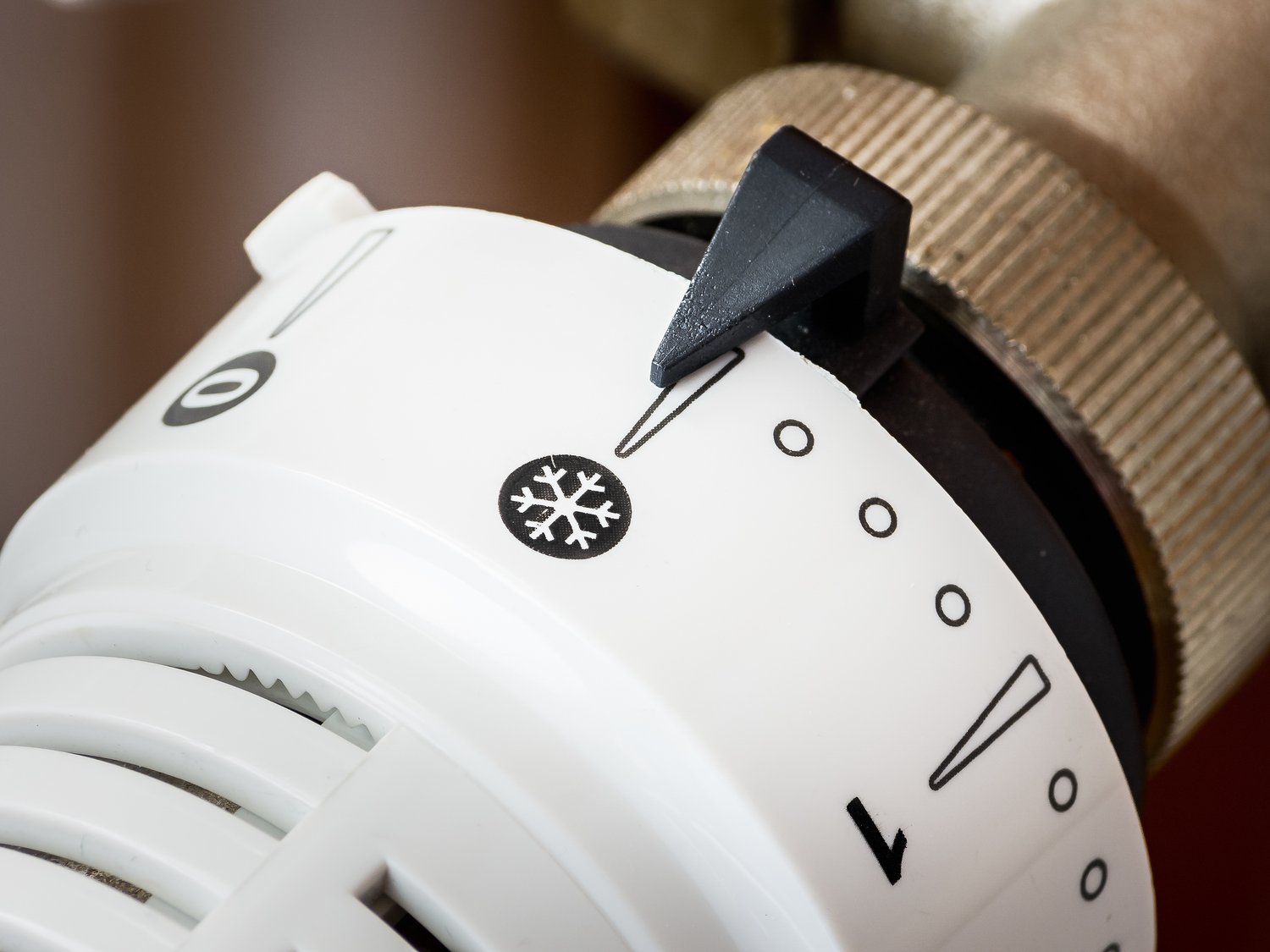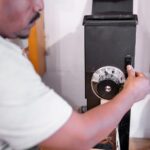Electric baseboard heaters are an essential yet often overlooked component in home heating systems, providing efficient warmth when functioning properly. However, when they stop working, understanding the role of the thermostat can be key to solving the issue. This article delves into the intricacies of thermostat testing, guiding you through resolving common problems that could be causing your heater’s lack of response.
- Understanding Electric Baseboard Heater Issues and Thermostat Testing: Explore how the thermostat’s functionality is crucial to your heater’s operation and potential malfunctions.
- Initial Troubleshooting for Non-Responsive Heaters: Discover basic checks that can be easily performed before testing the thermostat for more complex issues.
- Performing Thermostat Testing on Your Electric Baseboard Heater: Learn a straightforward method to test whether the thermostat is the root of your heating difficulties.
- Identifying and Resolving Common Thermostat Problems: Get insights on typical thermostat issues and practical approaches to address them effectively.
- Tips for Maintaining Your Electric Baseboard Heater and Thermostat: Uncover best practices to ensure long-lasting performance and prevent future problems.
By absorbing the insights and recommendations offered in this article, you’ll be well-equipped to enhance the efficiency and reliability of your electric baseboard heaters, ensuring a cozy and comfortable environment in your home.
Understanding Electric Baseboard Heater Issues and Thermostat Testing
Electric baseboard heaters are essential for maintaining warmth in your home, especially during the colder months. However, these systems can sometimes run into problems, leading to inefficient heating or complete failure. This can often be traced back to one or more components of the baseboard heater itself.
A standard electric baseboard heater consists of several key parts: the heating element, thermostat, power supply, and control panel. Each of these components plays a crucial role in the overall function of the heater.
The thermostat, in particular, is a critical component as it regulates the temperature by controlling the power supply to the heating element. Problems with the thermostat, whether due to faulty wiring, incorrect settings, or calibration issues, can result in the heater failing to maintain the desired temperature or not turning on at all.
Understanding how your electric baseboard heater’s thermostat works is essential for diagnosing and resolving heating problems. By familiarizing yourself with these components and how they interact, you’ll be better equipped to identify potential issues and realize effective solutions.
Initial Troubleshooting for Non-Responsive Heaters
Before you begin testing the thermostat, it’s important to conduct some initial troubleshooting steps to rule out more obvious issues with your electric baseboard heater. Start by checking whether the heater is receiving power. Ensure that the circuit breaker hasn’t tripped and that the power switch is turned on.
Next, inspect the heater for any visible signs of damage such as burnt out wires or a malfunctioning heating element. Sometimes, what appears to be a complex problem might be due to a simple loose connection or a tripped reset button on the heater itself.
Examine the thermostat settings to ensure they are correctly configured. A thermostat that is set too low could prevent the heater from activating. Additionally, verify that the thermostat is securely mounted and that there are no obstructions affecting its sensors.
By following these initial steps, you can rapidly identify and address any straightforward issues, preparing you to delve into more specific testing of the thermostat if necessary.
Performing Thermostat Testing on Your Electric Baseboard Heater
To accurately diagnose electric baseboard heater issues, it is essential to test the thermostat for any faults. Begin by ensuring the heater is turned off to prevent any electrical mishaps during the testing process.
First, remove the thermostat cover carefully to access the wiring. Use a multimeter set to the resistance (ohms) mode to check the continuity between the thermostat terminals. If the multimeter shows no continuity when the thermostat is set to the heating position, the thermostat is likely faulty and requires replacement.
Next, verify the power supply by checking the voltage across the inputs of the thermostat. For a functioning unit, the reading should generally be around 240 volts. If you detect no power, there might be issues with the circuit breaker or the power cables leading to the thermostat.
Inspect the wiring connections for any signs of damage or corrosion, as these can also lead to thermostat malfunctions. Ensure all connections are secure and attempt to test the heater’s response upon reactivating it. Proper testing will not only help in pinpointing issues but also guide you towards efficient solutions.
Identifying and Resolving Common Thermostat Problems
Thermostat problems are a frequent cause of electric baseboard heater malfunctions. Common issues include inconsistent temperature readings, which can lead to uneven heating. In such cases, recalibrating the thermostat might solve the problem. Follow the manufacturer’s instructions to adjust the settings for accurate temperature control.
Another prevalent issue is unresponsive controls. This may arise from loose or worn-out components within the thermostat. Ensure all connections are tight. If the problem persists, consider replacing the thermostat, as deteriorating components will not improve over time.
Furthermore, a failure to maintain the desired room temperature can often be traced back to faulty thermostat wiring. Inspect and replace any damaged wires. Testing the thermostat’s response after addressing these issues is crucial to confirm that the repairs were successful.
Effective identification and resolution of thermostat issues not only restore proper heating but also enhance the efficiency of your electric baseboard heater, reducing energy costs and ensuring optimal comfort.
Tips for Maintaining Your Electric Baseboard Heater and Thermostat
Maintaining your electric baseboard heater and thermostat is crucial for extending their lifespan and ensuring optimal functionality. Regular maintenance can prevent costly repairs and improve energy efficiency, helping you save on utility bills.
Firstly, always turn off the power before beginning any maintenance work on your heater or thermostat. Safety is paramount when dealing with electrical systems.
Dust and debris can accumulate within the heater fins, reducing its efficiency. It’s advisable to clean the heater regularly. Use a vacuum with a hose attachment to remove any build-up. This simple step can prevent overheating and maintain effective heat distribution throughout your space.
Another important aspect is ensuring that the thermostat is functioning correctly. Occasionally, check the thermostat’s settings and calibration. Over time, a thermostat can become unresponsive or inaccurate, affecting your heating system’s performance. If calibration seems off, professional servicing might be required.
Inspect the wiring connections of both the heater and thermostat. Worn-out or loose wires can cause short circuits or ineffective operation. Moreover, damaged wires should be replaced promptly to ensure safety and functionality.
Consider scheduling a professional inspection at least once a year. A certified technician can catch potential issues early, optimizing the performance of your electric baseboard heater and ensuring your thermostat is in perfect working order.
To further enhance the system’s efficiency, try to maintain a consistent temperature setting. Frequent adjustments can cause unnecessary wear on your thermostat, potentially shortening its lifespan.
Frequently Asked Questions About Electric Baseboard Heaters and Thermostat Testing
What are common issues with electric baseboard heaters?
- Defective thermostat
- Blown fuses
- Faulty wiring
How can I tell if my thermostat is the problem?
Check if the heater turns on when you bypass the thermostat.
What initial troubleshooting steps should I take?
- Ensure the power is on
- Inspect the circuit breaker
- Check for tripped safety switches
How do I test the thermostat?
Disconnect the thermostat from the circuit and use a multimeter to check for continuity.
What are typical thermostat malfunction signs?
- No heat when set to high
- Inconsistent heating
- Unresponsive controls
Can I fix thermostat issues myself?
Basic issues can be DIY; complex ones may need professional service.
What maintenance tips help improve heater lifespan?
Regular dusting and inspecting connections can enhance performance.





